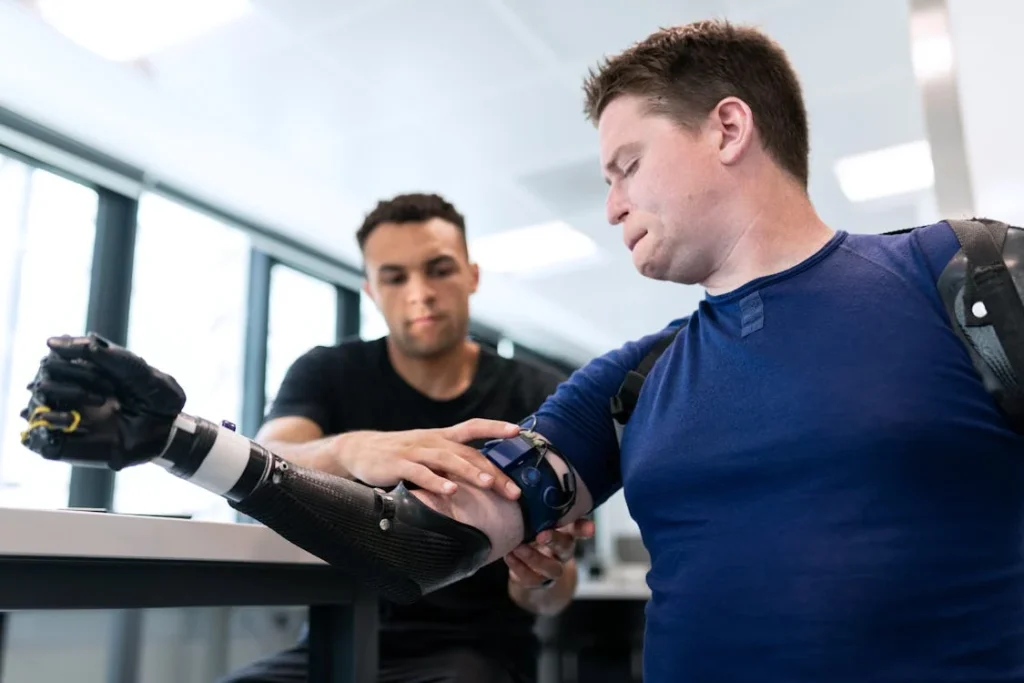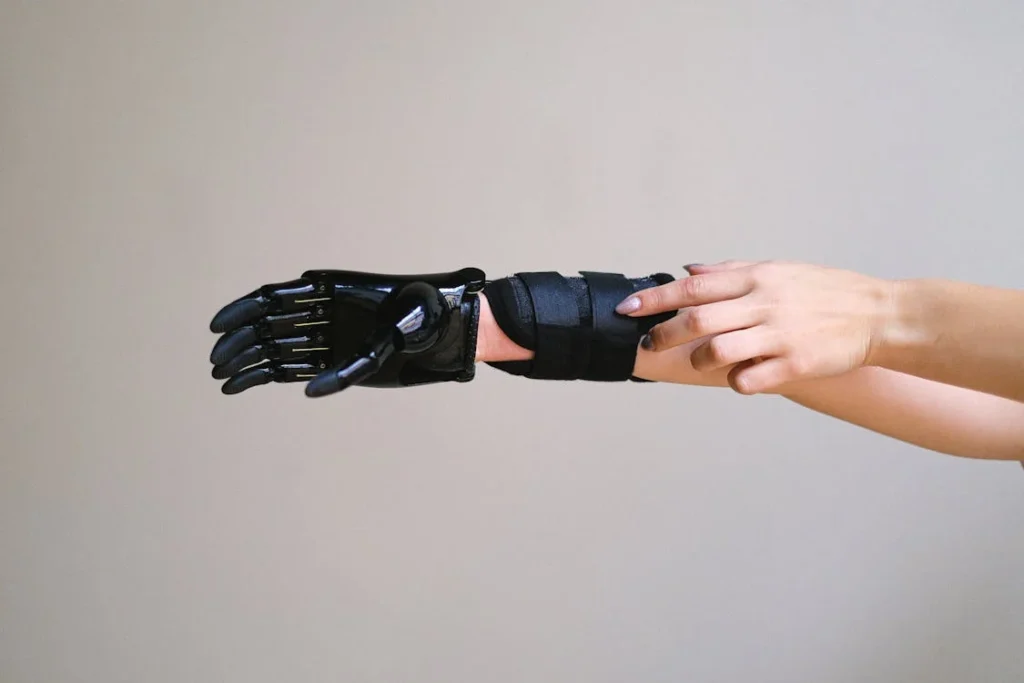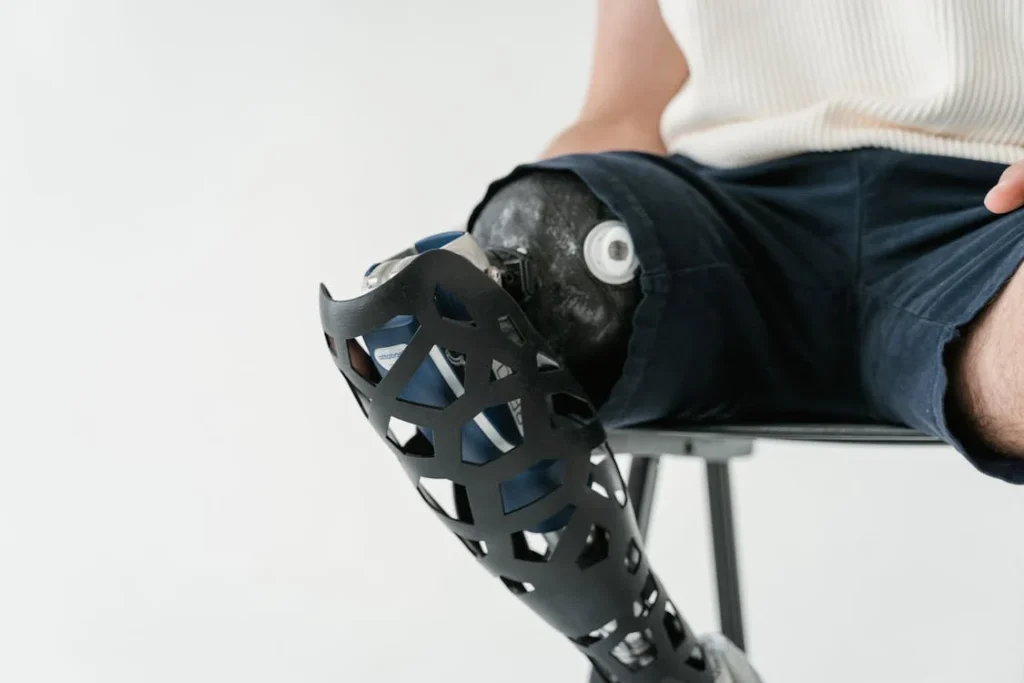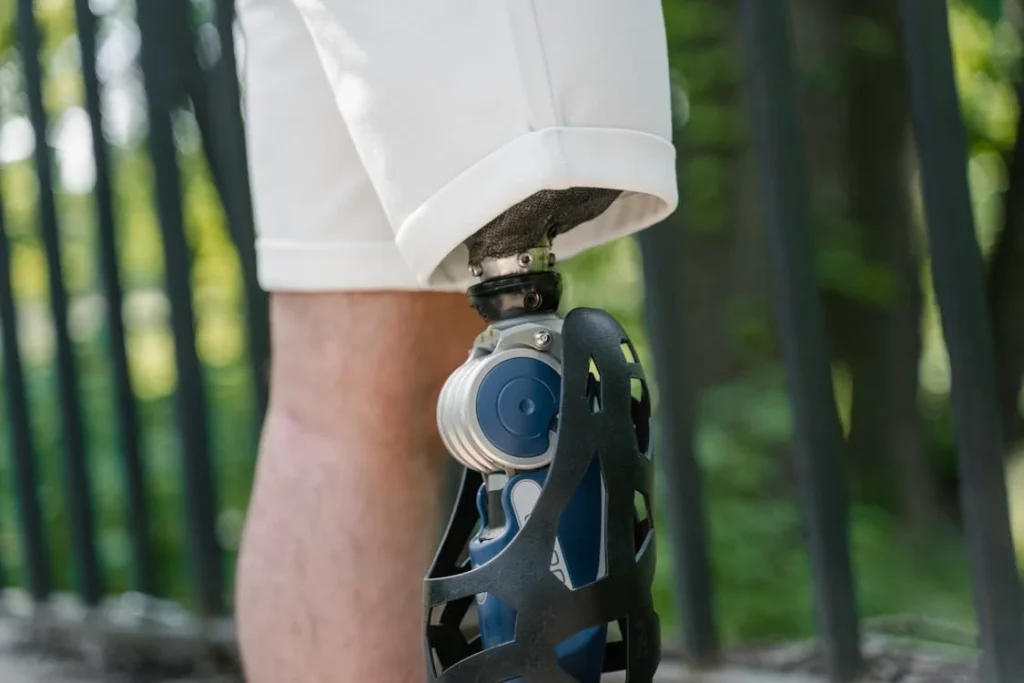Recovering from an amputation is a journey that requires patience, determination, and the right strategies. Regaining strength and mobility is central to this process, as it empowers individuals to reclaim independence and return to daily activities. While the road may feel challenging at times, it is also filled with opportunities for growth and resilience. With a structured plan, consistent effort, and support from healthcare professionals, building strength and mobility after an amputation becomes an achievable and rewarding goal.
This guide provides practical, step-by-step insights into rebuilding your body and mind, helping you move forward with confidence and ease.

The Foundations of Post-Amputation Recovery
Why Strength and Mobility Matter
Strength and mobility form the basis of every movement you make, whether it’s standing, walking, or performing simple tasks like reaching for an object.
After an amputation, your body undergoes significant changes that affect balance, muscle strength, and overall functionality. Rebuilding these abilities is essential not only for physical recovery but also for emotional well-being and independence.
Mobility ensures that you can navigate your environment safely and confidently, while strength allows you to perform daily tasks without strain or fatigue.
Together, they open the door to greater freedom, enabling you to participate fully in life’s activities. A strong body also supports the use of a prosthetic limb, making movements more natural and efficient.
Setting Realistic Goals
The journey to regaining strength and mobility begins with setting clear and realistic goals. Every person’s recovery is unique, influenced by factors such as the level of amputation, overall health, and personal aspirations.
For some, the goal may be walking independently with a prosthetic, while for others, it might involve mastering the use of assistive devices or resuming specific hobbies.
Working closely with your rehabilitation team, including physical therapists and prosthetists, helps establish achievable milestones tailored to your needs.
These goals provide a sense of direction and purpose, motivating you to stay committed to the process. They also allow for celebrating progress, no matter how small, which reinforces a positive mindset and builds momentum.
Understanding the Role of Physical Therapy
Physical therapy is the backbone of post-amputation recovery, offering structured exercises and techniques that target specific areas of the body.
Early sessions often focus on managing pain, improving circulation, and preventing complications such as muscle atrophy or joint stiffness. As recovery progresses, therapy shifts toward strengthening muscles, improving balance, and enhancing coordination.
Therapists guide you through movements that not only build strength but also retrain your body to adapt to its new alignment. For example, after a lower-limb amputation, the remaining leg and core muscles take on additional responsibilities for balance and stability.
Upper-limb amputees may focus on fine motor skills and developing strength in the opposite arm. These tailored approaches ensure that therapy addresses your individual needs, setting the stage for long-term success.

Rebuilding Strength After Amputation
Strengthening the Residual Limb
The residual limb plays a critical role in post-amputation recovery, particularly if you plan to use a prosthetic. Maintaining its strength and health is essential for achieving a secure and comfortable fit.
Physical therapy often includes exercises designed to strengthen the muscles around the residual limb, improve flexibility, and shape it for optimal prosthetic use.
Compression therapy is a common technique used to reduce swelling and promote proper healing in the residual limb. This involves wearing a specially designed sock or sleeve that applies gentle pressure, helping to shape the limb and prepare it for weight-bearing activities.
Stretching exercises are also crucial, as they prevent stiffness and maintain the limb’s range of motion. Gentle movements that focus on the surrounding joints and muscles help improve circulation, reduce discomfort, and create a strong foundation for future mobility.
Building Core Stability
Core strength is the cornerstone of balance and stability, making it a primary focus in post-amputation recovery. The core includes muscles in your abdomen, lower back, and pelvis, which work together to support your spine and maintain proper posture.
After an amputation, the core takes on an even greater role, as it helps compensate for changes in weight distribution and body alignment.
Physical therapy incorporates targeted exercises that activate and strengthen these muscles. Movements such as seated or lying leg lifts, pelvic tilts, and gentle twists help improve core stability, allowing you to stand and move with greater confidence.
Over time, these exercises become more dynamic, incorporating activities that challenge your balance and coordination.
Strengthening Supporting Muscles
Post-amputation recovery also involves focusing on the muscles that support your residual limb and overall mobility. For lower-limb amputees, this means strengthening the remaining leg to compensate for the added workload.
Exercises like step-ups, leg presses, or controlled weight shifts help these muscles become more robust and efficient. Similarly, upper-limb amputees may work on enhancing shoulder and back muscles to ensure they can support movements effectively.
The supporting muscles of the arms and shoulders play a key role in using assistive devices such as crutches, walkers, or wheelchairs.
Strengthening these areas not only aids mobility but also prevents strain or injury from overuse. Targeted exercises guided by a physical therapist ensure that all muscles involved in movement are trained in harmony, creating a balanced and functional recovery process.

Regaining Mobility and Balance
Adjusting to Changes in Body Alignment
Amputation alters your body’s center of gravity, requiring adjustments in posture, gait, and balance. These changes are particularly pronounced in the early stages of recovery when movements can feel unfamiliar or awkward.
Physical therapy helps retrain your body to adapt to these changes by focusing on balance, coordination, and proprioception—the body’s ability to sense its position in space.
Therapists often use exercises that encourage weight shifting and controlled movements, helping you regain stability and confidence.
Activities like standing on one foot, walking along a marked path, or practicing transitions from sitting to standing improve coordination and prepare you for more complex tasks.
These exercises are progressive, starting with basic movements and gradually incorporating dynamic activities that mirror real-life situations.
Using Assistive Devices
Mobility aids such as crutches, walkers, or wheelchairs are valuable tools during the recovery process. They provide stability and support as you rebuild strength and confidence in your movements.
Learning to use these devices properly is a key focus of physical therapy, ensuring that they enhance mobility without causing additional strain.
For those transitioning to a prosthetic, assistive devices are often used in the early stages to practice walking and weight-bearing. Therapists guide you through exercises that teach proper technique and alignment, creating a smooth progression toward independent movement.
Adapting to a Prosthetic
Using a prosthetic limb requires time, practice, and patience. The initial phase involves fitting the prosthetic to your residual limb and learning how to wear it comfortably.
Physical therapy plays a crucial role in this process, teaching you how to balance, walk, or perform tasks with the prosthetic.
Therapists often introduce gradual exercises to help you build confidence in the device. For lower-limb prosthetics, this may include standing on parallel bars to practice weight distribution or walking on a treadmill to refine your gait.
Upper-limb prosthetics may involve practicing gripping, lifting, or rotating movements, enabling you to perform daily tasks with greater ease.
The goal is to make the prosthetic feel like a natural extension of your body. Advanced prosthetics, such as those offered by Robobionics, feature ergonomic designs and intuitive controls that enhance functionality and comfort.
Regular adjustments and check-ins with your prosthetist ensure the device continues to meet your needs as you progress in your recovery.

Overcoming Emotional Barriers to Mobility
The Role of Confidence in Recovery
Rebuilding strength and mobility after an amputation is not solely a physical process—it also involves addressing emotional barriers.
Fear of falling, frustration with slow progress, or anxiety about navigating unfamiliar environments can hinder your willingness to engage in rehabilitation.
Overcoming these challenges requires a combination of encouragement, goal-setting, and support from your rehabilitation team.
Small successes, such as standing unaided or taking a few steps with a prosthetic, play a vital role in boosting confidence. Celebrating these milestones reminds you of your progress and reinforces your determination to move forward.
Therapists also provide reassurance and practical advice, creating a safe space for you to explore your capabilities without fear of judgment or failure.
The Importance of a Support System
Support from family, friends, and healthcare professionals is invaluable during the recovery process. Having someone to share your journey with provides emotional comfort and motivation, making the challenges feel more manageable.
Rehabilitation programs often encourage the involvement of loved ones, who can assist with exercises, offer encouragement, and celebrate achievements alongside you.
Support groups or community networks for amputees can also be a powerful resource. Connecting with others who have faced similar challenges fosters a sense of belonging and provides opportunities to exchange tips, advice, and inspiration.
These connections remind you that you are not alone in your journey and that success is achievable with persistence and support.
Incorporating Functional Movements
As strength and mobility improve, the focus of rehabilitation shifts toward functional movements—activities that mimic real-life tasks. These exercises are designed to prepare you for the physical demands of daily life, such as walking, climbing stairs, or lifting objects.
By practicing these movements in a controlled environment, you gain the skills and confidence needed to perform them independently.
For lower-limb amputees, functional movements often include walking on various surfaces, navigating uneven terrain, and transitioning between sitting and standing.
These exercises enhance balance and coordination while improving your ability to adapt to different environments.
Upper-limb amputees may focus on tasks such as holding utensils, opening doors, or carrying items, rebuilding the fine motor skills necessary for everyday activities.
Functional movements are not only practical but also empowering. Each successful attempt reinforces your independence and highlights your progress, motivating you to continue pushing your limits.
Addressing Pain and Discomfort
Pain and discomfort are common challenges during the recovery process, but they can be managed effectively with the right strategies.
Physical therapy often includes techniques to reduce residual limb pain, improve circulation, and alleviate tension in overused muscles. Therapists may use massage, stretching, or heat therapy to provide relief and promote relaxation.
Phantom limb pain, a phenomenon where sensations seem to originate from the missing limb, can also impact recovery. Techniques such as mirror therapy, desensitization exercises, and mindfulness practices help manage this unique type of discomfort.
Addressing pain proactively ensures that it does not become a barrier to building strength and mobility.
The Role of Consistency in Recovery
Consistency is the foundation of success in post-amputation rehabilitation. Regular therapy sessions, daily exercises, and a commitment to your recovery plan create the momentum needed for sustained progress.
While some days may feel more challenging than others, maintaining a routine ensures that every effort contributes to your long-term goals.
Therapists emphasize the importance of building habits that support recovery, such as incorporating stretches into your morning routine or practicing functional movements during daily activities.
These small, consistent actions create a cumulative effect, allowing you to achieve milestones that once seemed out of reach.
Transitioning to Independent Mobility
As strength and mobility improve, you will gradually transition to greater independence. This phase of recovery is marked by the ability to perform activities without constant assistance or supervision.
Whether it’s walking without support, driving, or returning to work, these milestones reflect your progress and resilience.
Independence is not just about physical abilities—it’s also about confidence. Each step toward self-reliance reinforces your sense of empowerment, reminding you of the strength you’ve built throughout your journey.

Nutrition for Strength and Mobility
Proper nutrition is a cornerstone of recovery after an amputation. The food you eat fuels your body’s healing process, supports muscle development, and provides the energy needed for physical therapy and daily activities.
When combined with a structured rehabilitation program, a well-balanced diet can significantly enhance your strength, mobility, and overall well-being.
The Role of Protein in Recovery
Protein is one of the most important nutrients for building strength and repairing tissues. After an amputation, your body works hard to heal surgical wounds and adapt to new physical demands, both of which require increased protein intake.
Foods rich in high-quality protein, such as lean meats, eggs, fish, and legumes, provide the amino acids necessary for muscle repair and growth.
For individuals engaged in physical therapy, protein plays an additional role by supporting the development of the muscles required for balance, mobility, and prosthetic use.
Incorporating a source of protein into each meal ensures your body has a steady supply of the nutrients it needs to recover and strengthen.
The Importance of Anti-Inflammatory Foods
Inflammation is a natural part of the healing process, but prolonged or excessive inflammation can hinder recovery and contribute to discomfort. Including anti-inflammatory foods in your diet can help reduce swelling, promote circulation, and support overall healing.
Colorful fruits and vegetables, such as berries, leafy greens, and sweet potatoes, are rich in antioxidants that combat inflammation and protect your body’s cells.
Healthy fats, such as those found in nuts, seeds, avocados, and olive oil, also play a role in managing inflammation. These fats support joint health and help maintain flexibility, which is especially important for individuals participating in stretching and mobility exercises.
The Role of Micronutrients
Vitamins and minerals are the unsung heroes of recovery, providing the essential support your body needs to function optimally.
Calcium and vitamin D are crucial for maintaining bone health, particularly if you are adjusting to a prosthetic limb or bearing weight on your residual limb. Dairy products, fortified plant-based alternatives, and leafy greens are excellent sources of these nutrients.
Magnesium, found in foods like almonds, spinach, and bananas, supports muscle function and helps reduce cramping. Zinc, often present in whole grains, beans, and meat, aids in wound healing and boosts your immune system, protecting your body as it recovers.
Vitamin C, abundant in citrus fruits, peppers, and strawberries, enhances collagen production, which is essential for tissue repair and skin health.
Staying Hydrated for Optimal Performance
Hydration is a key component of recovery that is often overlooked. Water supports nearly every bodily function, from regulating temperature to delivering nutrients to cells.
Staying well-hydrated ensures your muscles remain flexible and reduces the risk of cramping or stiffness during therapy sessions. Proper hydration also improves circulation, which helps deliver oxygen and nutrients to your residual limb, speeding up the healing process.
In addition to water, hydrating foods like cucumbers, melons, and oranges can contribute to your daily fluid intake. For those engaged in intense physical therapy, electrolyte-rich drinks may help replenish lost minerals and maintain energy levels.
Creating a Balanced Recovery Diet
A balanced diet combines macronutrients—proteins, fats, and carbohydrates—with essential vitamins and minerals to support every aspect of your recovery.
While protein builds and repairs tissues, carbohydrates provide the energy you need to engage fully in therapy and daily activities. Whole grains, fruits, and vegetables are excellent sources of complex carbohydrates that sustain energy without causing spikes in blood sugar.
Healthy fats, found in foods like fish, nuts, and seeds, play a dual role by supporting joint health and providing a concentrated source of energy.
Including a variety of nutrient-dense foods in your meals ensures that you meet your body’s needs without relying on processed or calorie-dense options that lack essential nutrients.
Consulting with Professionals
Every individual’s nutritional needs are unique, especially during recovery. Working with a registered dietitian or nutritionist can help you create a meal plan tailored to your specific goals and requirements.
They can take into account factors such as your activity level, medical history, and personal preferences, ensuring your diet supports your recovery while remaining enjoyable and sustainable.
In addition to personalized guidance, professionals can help you identify potential gaps in your diet and recommend supplements if needed.
For example, if you struggle to get enough vitamin D from sunlight or food sources, a supplement may help bridge the gap. Similarly, individuals with dietary restrictions or allergies can benefit from expert advice on alternative options that provide the same nutritional benefits.
Long-Term Benefits of Proper Nutrition
The benefits of a healthy diet extend far beyond the initial recovery period. By establishing good eating habits during rehabilitation, you set the stage for long-term health and mobility.
A strong, well-nourished body is better equipped to handle the physical demands of daily life, reducing the risk of injury or complications down the road.
Good nutrition also supports mental well-being, which is essential for maintaining motivation and resilience during recovery.
A balanced diet rich in nutrients that promote brain health, such as omega-3 fatty acids and B vitamins, helps regulate mood and energy levels, keeping you focused on your progress.

The Psychological Aspect of Recovery
Recovering from an amputation is not just a physical journey—it is deeply emotional and psychological as well. The mind and body are intricately connected, and addressing the mental and emotional aspects of recovery is just as important as rebuilding strength and mobility.
For many individuals, the process of coming to terms with the loss of a limb involves a wide range of emotions, from grief and frustration to hope and determination. Understanding and addressing these feelings is a crucial part of achieving holistic recovery.
Coping with the Emotional Impact
The loss of a limb represents a significant life change that can affect how you see yourself and interact with the world. It is natural to experience feelings of sadness, anger, or even denial as you adjust to this new reality.
These emotions are not signs of weakness but rather a normal response to a challenging situation. Acknowledging and validating these feelings is the first step toward healing.
As you progress through recovery, these emotions may ebb and flow. Some days may feel overwhelming, while others bring a sense of accomplishment and progress.
It is important to remember that emotional recovery is not linear, and setbacks are a natural part of the process. What matters most is finding ways to process these emotions and move forward with a sense of purpose.
Building Confidence and Self-Identity
After an amputation, many individuals grapple with changes to their self-image and identity. It is common to feel self-conscious or unsure about how others perceive you.
These feelings can create barriers to engaging fully in rehabilitation or social activities, making it essential to rebuild confidence from within.
Therapy can be an invaluable tool in this process. Working with a counselor or psychologist allows you to explore your feelings in a safe, supportive environment.
Cognitive-behavioral therapy (CBT), in particular, can help challenge negative thought patterns and replace them with constructive, empowering beliefs.
For example, instead of focusing on limitations, CBT encourages you to recognize your strengths and celebrate your progress.
Support groups and peer networks also play a vital role in fostering confidence. Connecting with others who have experienced similar challenges provides a sense of community and reassurance.
Hearing stories of resilience and triumph from those further along in their journey can inspire you to believe in your own potential.
Overcoming Psychological Barriers to Recovery
One of the most significant psychological challenges during recovery is fear—fear of falling, fear of failure, or fear of the unknown. These fears can create mental blocks that make it difficult to fully engage in rehabilitation or embrace new opportunities.
Overcoming these barriers involves confronting them with patience and support.
Gradual exposure to challenging situations in a controlled environment can help desensitize you to these fears. For instance, practicing balance exercises with the guidance of a therapist allows you to build trust in your abilities while minimizing the risk of injury.
Each small success reinforces your confidence and reduces anxiety, making it easier to tackle more significant challenges.
Visualization is another effective technique for overcoming psychological barriers. Mentally rehearsing movements or activities before attempting them can help your brain create a roadmap for success.
This practice not only reduces anxiety but also improves your performance by preparing your mind and body to work together seamlessly.
The Role of Resilience in Recovery
Resilience is the ability to adapt and thrive in the face of adversity, and it is a key factor in overcoming the psychological challenges of recovery. Building resilience involves developing a mindset that focuses on growth, learning, and the opportunities that arise from change.
One way to cultivate resilience is by setting small, achievable goals that provide a sense of accomplishment. Each milestone, whether it’s mastering a new exercise or completing a daily task independently, reinforces your belief in your ability to overcome obstacles.
Over time, these achievements create a foundation of confidence and determination that carries you through the more challenging moments of recovery.
Another aspect of resilience is finding meaning and purpose in your journey. Many individuals discover new passions, hobbies, or career paths as they navigate life after an amputation.
These pursuits not only provide a sense of fulfillment but also remind you of your ability to contribute and thrive in meaningful ways.
Embracing Emotional Support
No one should face the psychological challenges of recovery alone. Surrounding yourself with a strong support network of family, friends, and healthcare professionals provides the encouragement and reassurance needed to navigate this journey.
Open communication is essential—sharing your feelings and experiences with trusted individuals helps alleviate the emotional burden and fosters a sense of connection.
In addition to personal support systems, professional counseling can provide targeted strategies for managing stress, anxiety, or depression.
Techniques such as mindfulness, relaxation exercises, and stress management tools help calm the mind and improve emotional well-being. Therapy sessions also offer a space to reflect on your progress, celebrate your achievements, and address any lingering doubts or concerns.
Moving Forward with Positivity
The psychological aspect of recovery is not about erasing difficulties—it’s about learning to navigate them with strength and optimism.
By addressing your emotions head-on and seeking support when needed, you create a path forward that is grounded in self-awareness and resilience. Each step you take, both physically and emotionally, brings you closer to a life filled with independence, fulfillment, and purpose.
At Robobionics, we understand that recovery is as much about the mind as it is about the body. That’s why we are committed to supporting you every step of the way, providing not only advanced prosthetic solutions but also the encouragement and guidance you need to thrive.
Conclusion
In conclusion, rebuilding strength and mobility after an amputation is a journey of resilience, determination, and growth. It involves not only physical recovery but also emotional healing and the willingness to embrace new possibilities. With the right combination of physical therapy, nutritional support, psychological care, and consistent effort, you can regain independence and confidence, allowing you to fully engage with life once again. Each step forward, no matter how small, is a testament to your strength and potential.
At Robobionics, we are dedicated to supporting you at every stage of your recovery. From innovative prosthetic solutions to personalized rehabilitation programs, we provide the tools and guidance you need to succeed. Your journey is unique, and so is your ability to overcome challenges and thrive. Contact us today to learn how we can help you take the next step toward a brighter, stronger future.



